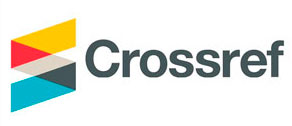Rasio Investasi, Quick Ratio, Return on Investment, dan Pertumbuhan Perusahaan dalam Memengaruhi Dividend Payout Ratio (Studi Kasus pada 5 Perusahaan Industri Manufaktur di Bursa Efek Indonesia
Abstract
All companies have a goal of improving the welfare of the owners and investors.The company's goal can be achieved by maximizing the stock price, in order to improve the welfare of the shareholders of the company distributing dividends each year. Dividend policy of the company relating to the determination of the percentage of profits to be distributed to shareholders in the form of dividends or retained for future investment financing. Dividend policy has significant implications for investors and for companies, because it involves two parties and conflicting interests, namely the shareholders with dividends, and interest of the company retained earnings. The amount of profit is distributed as dividends declared a Dividend Payout Ratio (DPR). Dividend Payout Ratio is the ratio between the dividend with earnings per share expressed as a percentage.
The problems that arise as a consequence of the divergence of interests between investors and companies to make the management company should be able to make the right policy on corporate dividend percentage by considering the factors that influence it. Therefore, researchers conduct research with the aim to determine the effect of variables investment ratio, quick ratio, return on investment, and firm growth partially and simultaneously the dividend payout ratio at 5 Industrial Manufacturing companies in the Indonesia Stock Exchange (formally Jakarta Stock Exchange) in the year 2003 to 2007. This research is expected to contribute to determine the effect of the investment ratio, quick ratio, return on investment, and growth of the company's dividend payout ratio which can then be used sabagai additional information in making investment decisions.
The result showed that the individual test results show that of the four independent variables were examined, ie variable investment ratio, quick ratio, return on investment, and growth of the company, only the ratio of investment and growth in the company's effect on the dependent variable, the dividend payout ratio. While the test results simultaneously (together) shows the investment ratio, quick ratio, return on investment, and the growth of corporate influence the dividend payout ratio. Subsequent research suggested attention to other factors outside of the study were still associated with the dividend policy and also can use other companies listed on the JSE in addition to manufacturing companies. Observation period used can be extended so that more number of observations, it would be more valid to generalize the results of the study.
Keywords
Full Text:
PDFReferences
Chakra. 2003. Pengaruh Kinerja Keuangan Perusahaan yang Diukur dengan Rasio Profitabilitas (ROI dan NPM) Terhadap Dividend Payout Ratio. Unpublished Skripsi S1, Universitas Widyatama, Surabaya.
Darmaji, Tjiptono dan Hendy Fakhrudin. 2000. Pasar Modal Indonesia, Salemba Empat,Jakarta.
Farhan, Akhmad Fanny. 2005. Pengaruh Perputaran Modal Kerja Terhadap tingkat Likuiditas Perusahaan. Unpublished Skripsi S1, Universitas Widyatama, Surabaya.
Fijrijanti, Tettet dan Jogiyanto Hartono M. 2001. Analisis Korelasi Pokok IOS Dengan Realisasi Pertumbuhan, Kebijakan Pendanaan dan Deviden. Simposium Nasional Akuntansi III . Jakarta.
Gitosudarmo, Indriyo dan Basri. 2000. Manajemen Keuangan, Edisi 5, Yogyakarta: BPFE.
Hartono, Jogiyanto. 1998. Teori Portofolio dan Analisis Investasi, Penerbit BPFE Yogyakarta, Edisi Pertama.
Husnan, Suad. 2000. Dasar Dasar Teori Portofolio dan Analisis Sekuritas. UPP AMP YKPN, Yogyakarta.
Ikatan Akuntansi Indonesia. 1999. Standar Akuntansi Keuangan, Salemba Empat, Jakarta.
Munawir. 2002. Analisa Laporan Keuangan, Edisi keempat, Cetakan ketiga belas, Liberty, Yogyakarta.
Puturuhu, Rina Vharolina. 2007. Pengaruh Pengumuman Perubahan Dividen Tunai Terhadap Variabilitas Tingkat Keuntungan Saham. Unpublished Skripsi S1, Universitas Atma Jaya, Yogyakarta.
Riyanto, B. 1997. Dasar-dasar Pembelanjaan Perusahaan, Edisi 4, BPFE UGM, Yogyakarta.
Santosa, Purbayu Budi dan Ashari. 2005. Analisis Stasistik dengan Microsoft Exceldan SPSS, Edisi Pertama, Penerbit Andi, Yogyakarta.
Sartono, R. Agus. 2001. Manajemen Keuangan (Teori dan Aplikasi), Edisi Keempat, BPFE Yogyakarta.
Subekti, Imam. 2001. Asosiasi Antara Set Kesempatan Investasi dengan Kebijakan Pendanaan dan Dividen Perusahaan, Serta Implikasinya pada Perubahan Harga Saham. Jurnal Riset Akuntansi Indonesia, Vol. 4, No. 1.
Suharli, Michell, dan Megawati Oktarina. 2005. Memprediksi Tingkat Pengembalian Investasi pada Equity Securities melalui Rasio Profitabilitas, Likuiditas dan Hutang pada Perusahaan Publik di Jakarta. Simposium Nasional Akuntansi VII.
Sunariyah. 2003. Pengantar Pengetahuan Pasar Modal. UPP AMP YKPN, Yogyakarta.
Utami, Sih Windhi. 2007. Asosiasi Antara Investment Opportunity Set dengan Kebijakan Pendanaan, Kebijakan Dividen, dan Implikasinya pada Perubahan Harga Saham. Unpublished Skripsi S1, Unversitas Brawijaya, Malang.
Weston, J. Fred dan Eugene F. Brigham. 1993. Manajemen Keuangan, Edisi 7, Erlangga, Jakarta.
Wijayanto, Bambang. 2002. Pengaruh Pengumuman Dividen Terhadap Retur Saham pada Periode Pasar Bullish dan Bearish di Bursa Efek Jakarta. Unpublished Tesis S2, Magister Manajemen UGM, Yogyakarta.
DOI: http://dx.doi.org/10.36448/jak.v1i1.9











